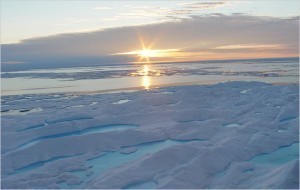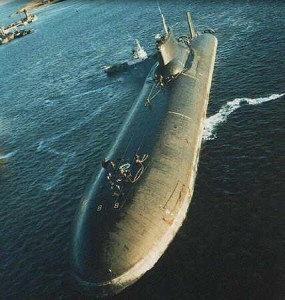How Deep is the Arctic Ocean?
Known as the shallowest and the smallest oceanic  division in the world, the Arctic Ocean is situated at the Northern Hemisphere. This body of water is surrounded by North America and Eurasia. Sea ice covers some parts of the ocean. The salinity and the temperature of the water of the ocean change every time the sea ice freezes and melts. Aside from this, water temperature and salinity are also affected by low evaporation and heavy water flow from streams and rivers. To have ideas about the geography of the Arctic Ocean, let us look at the depth of this body of water.
division in the world, the Arctic Ocean is situated at the Northern Hemisphere. This body of water is surrounded by North America and Eurasia. Sea ice covers some parts of the ocean. The salinity and the temperature of the water of the ocean change every time the sea ice freezes and melts. Aside from this, water temperature and salinity are also affected by low evaporation and heavy water flow from streams and rivers. To have ideas about the geography of the Arctic Ocean, let us look at the depth of this body of water.
The Depth of the Arctic Ocean
How deep is the Arctic Ocean? The ocean’s mean depth is 3,410 feet. The deepest part of the Arctic is found in the Eurasian Basin. It has a depth of 17,900 feet. The ocean is popular for the Lomonosov Ridge, which separates the North Polar Basin into two, namely the Amerasian Basin and the Eurasian Basin.
The Amerasian Basin (also known as the Hyperborean Basin or the North American Basin) has a depth of 13,000 feet. The Amerasian Basin and the Eurasian Basin are divided by numerous ridges. The ridges formed various basins including the Makarov Basin, the Canada Basin, the Fram Basin and the Nansen Basin. Some of the major tributaries to the Arctic Ocean are the White Sea, the Greenland Sea, the East Siberian Sea, the Hudson Strait, the Laptev Sea, the Hudson Bay and the Beaufort Sea.
Additional Facts and Other Interesting Details
The Arctic Ocean is abundant in natural resources. Some of the resources that are present in the ocean include natural gas fields, petroleum gas fields, polymetallic nodules, placer deposits, gravel and sand aggregates, seals, fishes and whales.
Many countries such as the United States, Denmark and Norway have disputes related to the political dead zone found just several miles from the center of the Arctic because it is possible that the zone holds 25 per cent of the undiscovered gas and oil resources in the world. When it comes to marine species, the ocean plays home to endangered animals like whales and walruses. Phytoplanktons are essential to the survival of species living in the ocean.
The Arctic Ocean is also popular for major harbors and ports found within this body of water. Some of the famous ports and harbors are the Longyearbyen in Norway, Prudhoe Bay in the United States, Tuktoyaktuk in Canada and Dudinka in Russia.





